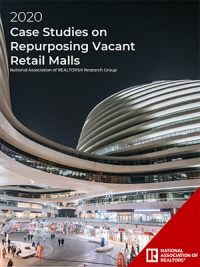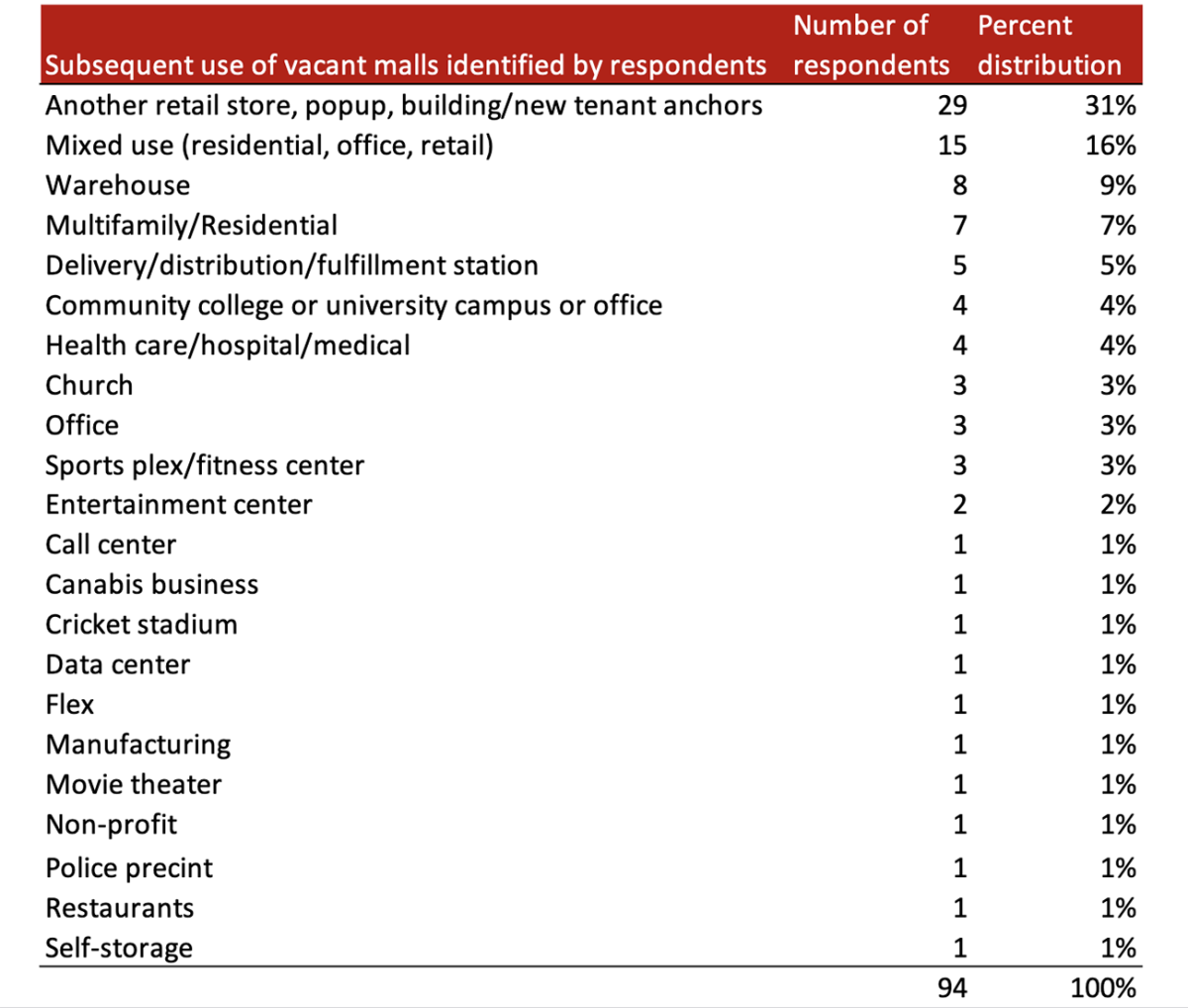Case Studies in This Report
- Worcester Center Galleria, Worcester, Massachusetts
- Cloverleaf Mall, Richmond, Virginia
- Nanuet Mall, Nanuet, New York
- Westside Pavilion, West Los Angeles, California
- Euclid Square Mall, Euclid, Ohio
- Metro North Mall, Kansas City, Missouri
Research Background
In past years, many brick-and-mortar retail stores have closed due to intense competition from the phenomenal increase in e-commerce sales. Even before the coronavirus pandemic dealt a heavy blow to the U.S. economy, brick and mortar retail stores were already suffering from the inroads of e-commerce. In 2019, e-commerce retail sales totaled $599.5 billion, or 11% of total retail sales of $5.5 trillion, a 22-fold increase since 2001 when e-commerce sales totaled only $27.5 billion, less than 1% of retail sales, according to the U.S. Census Bureau. However, it was not until 2017 that the wave of store closings started. Non-farm retail trade employment (seasonally adjusted) peaked to nearly 15.9 million in January 2017, but employment has fallen to 15.6 million as of March 2020, a loss of nearly 300,000 jobs during this period. The largest job losses were in clothing and clothing accessories stores (-121,800), sporting goods, hobby, book, music stores (-68,200), and department stores (-120,000), according to the Bureau of Labor Statistics. According to Coresight Research,1 an analytics company that tracks retail store closings and openings, 9,350 stores were closed in 2019, and another 2,021 have been shuttered as of April 24, 2020. The store closures include familiar household names such as Payless Shoe Source, Gymboree, Dressbarn, Charlotte Russe, Family Dollar, Gap, Sears, Walgreens, Forever 21, Kmart, Foot Locker, Bed, Bath & Beyond, Lowe's, J Crew, Kohl's, Lord & Taylor, Nordstrom, and even Walmart.
Up until the coronavirus pandemic escalated in March 2020, the retail trade industry had appeared to be on the rebound, with 2,963 new stores opened as of April 24, 2020, more than the 2,021 store closings. This recovery is now being challenged anew as some social distancing measures will likely remain in place even after sheltering and staying in place measures are lifted.
Vacant malls contribute to urban decay, declining property values, and lower tax revenues. Because of these adverse effects, it is important that vacant retail stores are repurposed for other uses.
Towards this end, the National Association of Realtors® Research Group prepared case studies that showcase how vacant retail malls are being repurposed and the sources of financing for these projects. The NAR Research Group undertook this project in support of the research agenda of the 2020 National Association of Realtors® Commercial Real Estate Research Advisory Board under Chair Soozi Jones Walker, CCIM, SIOR and Vice-Chair Dawn Aspaas.
The Research Group gathered information for these case studies using two approaches:
- Conducting a survey among its commercial members; and
- Conducting secondary research of examples of retail malls that have been repurposed successfully
The NAR Research Group sent out the survey to 65,000 commercial members during Mach 12-23, 2020, of which 2,684 responded to the survey. The survey asked respondents to provide at most five examples of transactions they conducted or were aware of, which resulted in 90 distinct transactions. Respondents provided information about the acquisition cost (per square foot), sources of financing, cap rates, length of time the mall was vacant before acquisition, and rezoning permit requirements. The provision of information was voluntary.
The secondary research features six case studies where there is extensive project and financial information. Project information was acquired from official various state and local government websites, official developer and architect websites, and local media outlets. The financial information was gathered from official various state and local government websites, official developer websites and SEC filings. To note, the Metro North Mall was one case study that survey participants identified for which project information is available.
1 Coresight Research, https://coresight.com/retail-store-tracker/#sector-coverage
















